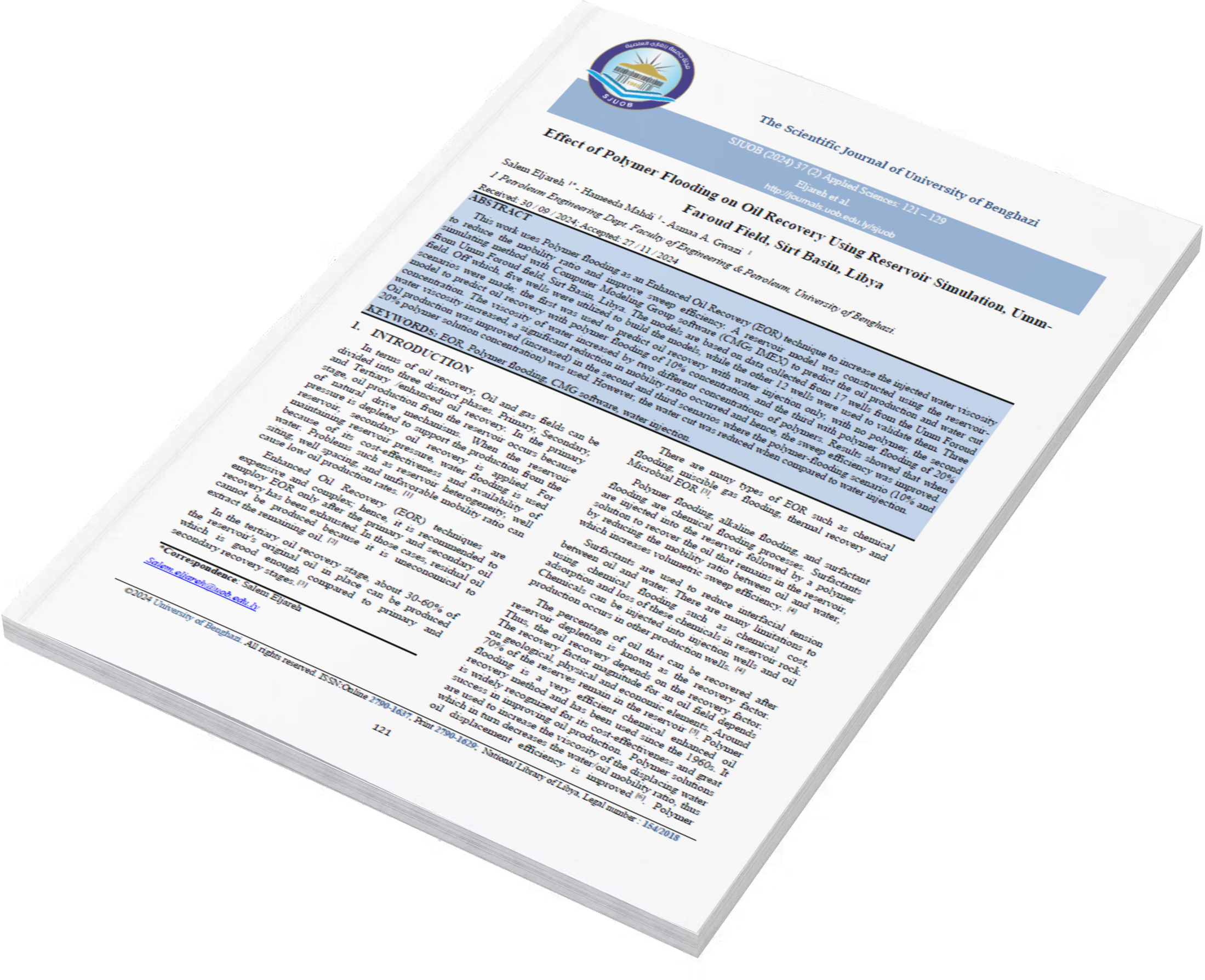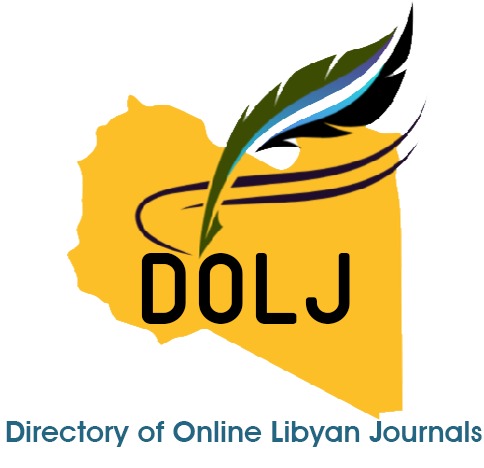Effect of Polymer Flooding on Oil Recovery Using Reservoir Simulation, Umm-Faroud Field, Sirt Basin, Libya
DOI:
https://doi.org/10.37376/sjuob.v37i2.7135Keywords:
EOR, Polymer flooding, CMG software, water injectionAbstract
This work uses Polymer flooding as an Enhanced Oil Recovery (EOR) technique to increase the injected water viscosity to reduce the mobility ratio and improve sweep efficiency. A reservoir model was constructed using the reservoir-simulating method with Computer Modeling Group software (CMGs IMEX) to predict the oil production and water cut from Umm Foroud field, Sirt Basin, Libya. The models are based on data collected from 17 wells from the Umm Foroud field. Off which, five wells were utilized to build the models, while the other 12 wells were used to validate them. Three scenarios were made; the first was used to predict oil recovery with water injection only, with no polymer, the second model to predict oil recovery with polymer flooding of 10% concentration, and the third with polymer flooding of 20% concentration. The viscosity of water increased by two different concentrations of polymers. Results showed that when water viscosity increased, a significant reduction in mobility ratio occurred and hence, the sweep efficiency was improved. Oil production was improved (increased) in the second and third scenarios where the polymer-flooding scenario (10% and 20% polymer solution concentration) was used. However, the water cut was reduced when compared to water injection.
Downloads
References
Green, D. W., & Willhite, G. P. (1998). Enhanced Oil Recovery. SPE textbook series, 6 p100.
Chang, H. L. (1978, August 1). Polymer flooding technology yesterday, today, and tomorrow.
Speight, J. G. (2013) Enhanced recovery methods for heavy oil and Tar sands 1-354 (2013)
Chaudhary, P.; Kumar, S; and Reddy, S. Polymer and its Role in EOR and Water shut-off process. Journal of Basic and Applied Engineering Research Vol. 3 Issue 8, 717-720 2016
Diwan, U. and Kovscek, A.R. (1999). An analytical model for simulating heavy-oil recovery by cyclic steam injection using horizontal wells, -SUPRI TR -118. United States N. P., 1999.
Needham, R. B., & Doe, P. H. Polymer flooding review. J Pet Techno 39 (1987): 1503-1507 doi:
http://doi.org/10.2118/17140-PA.
Wang, G., et al. “Thermal Recovery Technology Research and Application of Thin Heavy Oil Reservoir”. The International Oil and Gas Conference and Exhibition in China, Beijing, China. June 2010 doi:
http//doi.org/10.2118/131527-MS.
S. Door,K.K. Mohanty K ,viscous –fingering function for unstable immiscible flows SPE J., 22(1) (2017),PP.19-31doi :
http//doi.org/10.2118/173290-PA.
Seright, R.S. Wang, D. Lerner,N. Nguyen,A., Sabid, J.and Ron T can 25-cp polymer solution efficiently displace 1600-cp oil during polymer flooding. SPE J., 23(6)) 2018). 2260-2278.doi:
http//doi.org/10.2118190231-PA
Mehdi Zallaghi (2022) “Introduction to CMG Reservoir Simulator.pdf”
https://www.slideshare.net/slideshow/introduction-to-cmg-reservoir-simulatorpdf/252593132, (Jul15,2024)
Elsakran, S., 2018. Umm-Faroud Oil Field Reservoir Characterization for Modeling Purpose. Second Scientific Conference of Oil and Gas. Academy for higher studies - Eastern Region Ajdabya branch. Feb 5-7/2018, Ajdaby- Libya.Vol 1 P 296-313

Downloads
Published
How to Cite
Issue
Section
License
Copyright (c) 2024 The Scientific Journal of University of Benghazi

This work is licensed under a Creative Commons Attribution-NonCommercial-NoDerivatives 4.0 International License.


















